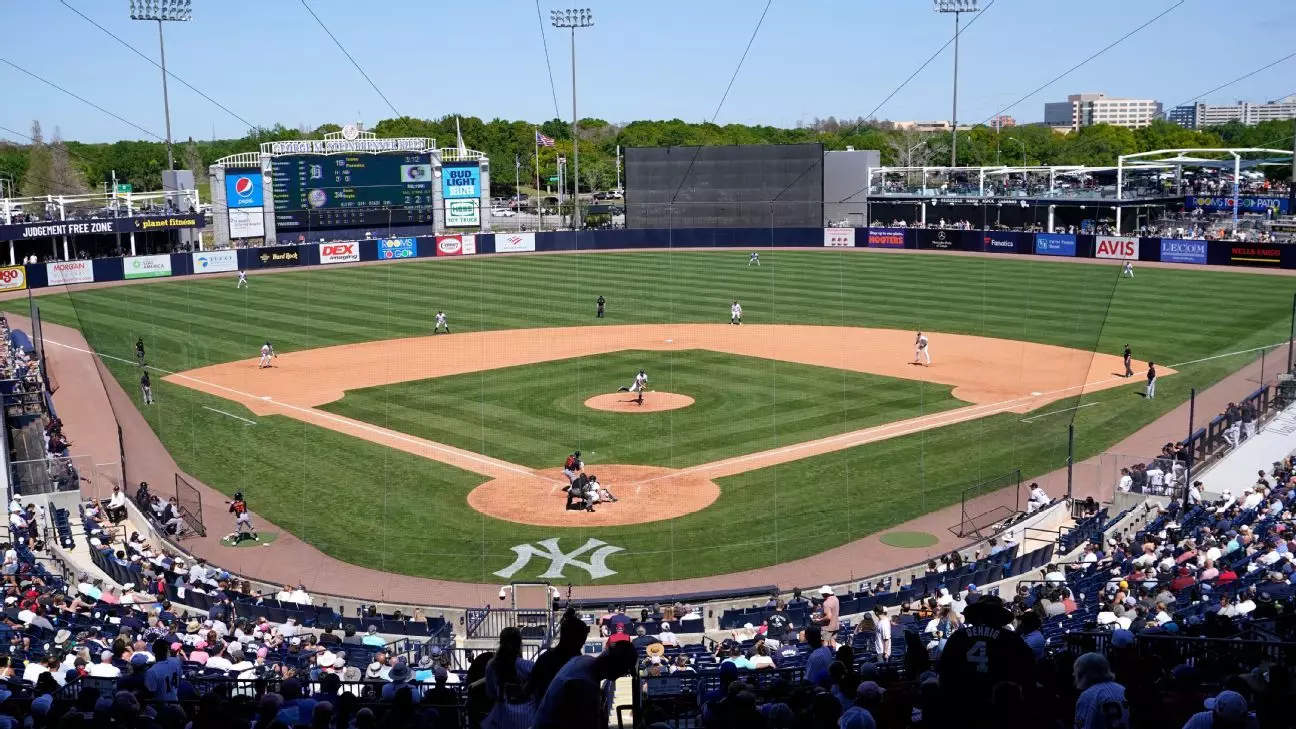In an effort to adapt to adverse weather conditions, Major League Baseball (MLB) has revised the Tampa Bay Rays’ early season schedule. Following the extensive damage to Tropicana Field caused by Hurricane Milton, the Rays are temporarily calling Steinbrenner Field in Tampa, Florida, their home. This shift marks a strategic move by MLB to take advantage of the drier conditions experienced earlier in the year, thus minimizing the risk of rainouts during pivotal summer months.
The newly minted schedule sees the Rays playing a substantial number of their games at home in the first half of the season. Specifically, they are scheduled to compete in 19 of their first 22 games on home turf and will continue to hold 37 out of 54 games at Steinbrenner Field through May 28. This focus on home games early in the season is significant, as it will allow the team to capitalize on the potential for greater fan attendance and support before the tropical summer rains set in.
Impact of the Weather on Game Planning
The weather-related adjustments are a critical consideration for the Rays as they navigate the logistics of their game schedule. Historical data from the National Weather Service indicates that Tampa averages around 2.25 inches of precipitation in April, escalating sharply to nearly 9 inches in August. This trend has informed MLB’s decision to front-load the Rays’ schedule with home games in the first half of the season, strategically avoiding areas of the calendar that are prone to unpredictable weather.
The consequences of inclement weather are far-reaching. When considering attendance, fan engagement, and televised viewership, rainouts can significantly impede a team’s momentum and financial viability. Thus, the decision to relocate series against teams such as the Los Angeles Angels highlights a proactive approach by the league to help maintain regularity in the schedule while supporting the Rays during this challenging transition.
The Long-Term Consequences
As the team moves forward with its altered game schedule, there is still uncertainty regarding the future of Tropicana Field. The ongoing repairs and restorations stemming from Hurricane Milton mean that the Rays may not be able to return home until 2026, with possibilities remaining uncertain. In the meantime, local minor league teams, such as the Class A Tampa Tarpons, face challenges of their own with numerous postponed or suspended games during the rainy season.
As the season progresses, the team’s transitional phase will likely influence both player performance and fan support. The Rays will open the season against teams like Colorado and Pittsburgh before embarking on a brief road trip to Texas. Their return for a significant homestand covering formidable opponents, including the Angels and New York Yankees, could serve as a litmus test for the newfound arrangement’s success.
The MLB’s scheduling shift regarding the Tampa Bay Rays is a significant step toward balancing competitive integrity with environmental realities. By maximizing home game opportunities before the height of summer precipitation, the league showcases its willingness to adapt and respond to the unique challenges faced by teams, ensuring that both players and fans can enjoy a stable baseball experience throughout the season.


Leave a Reply